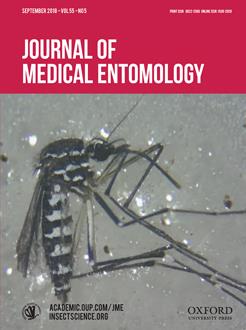Eastern Equine Encephalitis Virus (EEEV) is the most pathogenic arbovirus endemic to the United States. EEEV primarily infects birds but can be fatal to humans, horses, and some other mammals. Although EEEV transmission occurs in the Northeastern, Southeastern, and Midwestern United States, the largest number of horse and human cases have been reported in Florida, the only state where transmission occurs year round. Currently, a GIS-based risk index (RI) model is used to map EEE transmission risk to horses in Florida. This study validates that RI model using a 5-yr dataset of horse cases in Florida. RI values were similar between summer (N = 152, x = 0.59) and winter (N = 25, x = 0.66) cases, suggesting the model is effective for mapping risk during both transmission seasons.These risk values were larger and remained similar when a 100-m buffer was applied to the case locations to account for modest spatial errors in case reporting (summer x = 0.73, winter x = 0.77). In both comparisons, RI values for summer and winter cases were higher than expected at random in the Panhandle, North, and Central regions of the state, although the analysis was inconclusive in the South, where only two cases were observed.This suggests the RI map could be used to target EEEV surveillance, prevention, and control efforts in both transmission seasons in Florida.
How to translate text using browser tools
2 May 2018
Validation of a Risk Index Model for Predicting Eastern Equine Encephalitis Virus Transmission to Horses in Florida
Joni Downs,
Mehrdad Vaziri,
Alexandra Jenkins,
Thomas Unnasch
ACCESS THE FULL ARTICLE
It is not available for individual sale.
This article is only available to subscribers.
It is not available for individual sale.
It is not available for individual sale.

Journal of Medical Entomology
Vol. 55 • No. 5
September 2018
Vol. 55 • No. 5
September 2018
eastern equine encephalitis
GIS
mosquito borne disease
risk assessment





